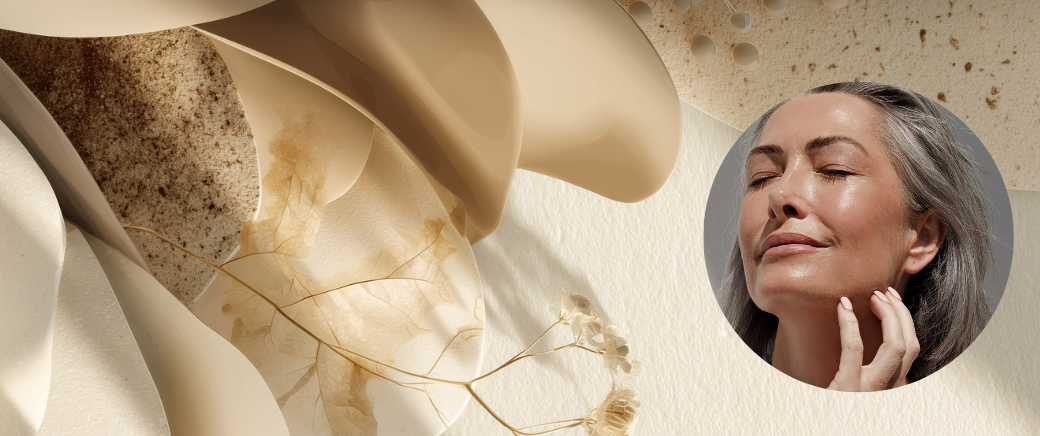
How to Tell if Hair Loss is Genetic or Stress-Related: A Comprehensive Guide
Hair loss can be a distressing experience, affecting both your appearance and self-confidence. Understanding whether your hair loss stems from genetic factors or stress is crucial for finding the most effective treatment approach. In this comprehensive guide, we'll explore the key differences between genetic and stress-related hair loss, how to identify which type you're experiencing, and the most effective strategies for addressing each condition.
Understanding the Different Types of Hair Loss
Before we can determine whether hair loss is genetic or stress-related, it's important to understand the main types of hair loss that affect both men and women.
Genetic Hair Loss (Androgenetic Alopecia)
Genetic hair loss, medically known as androgenetic alopecia, is the most common form of hair loss affecting both men and women. It's often referred to as:
-
Male Pattern Baldness (MPB) in men
-
Female Pattern Hair Loss (FPHL) in women
This type of hair loss is primarily influenced by genetics and hormonal factors, particularly the hormone dihydrotestosterone (DHT), which can cause hair follicles to shrink over time.
Stress-Related Hair Loss
Stress can trigger several types of hair loss, including:
-
Telogen Effluvium: The most common stress-related hair loss, where significant physical or emotional stress pushes more hair follicles into the resting (telogen) phase
-
Alopecia Areata: An autoimmune condition that can be triggered or worsened by stress
-
Trichotillomania: A psychological condition where individuals pull out their hair as a response to stress or anxiety
Key Differences: Genetic vs. Stress-Related Hair Loss
Let's examine the key differences that can help you determine whether your hair loss is genetic or stress-related:
|
Characteristic |
Genetic Hair Loss |
Stress-Related Hair Loss |
|
Pattern |
Specific pattern (receding hairline, crown thinning in men; widening part in women) |
Diffuse thinning all over the scalp |
|
Onset |
Gradual, progressive |
Often sudden, following a stressful event |
|
Timing |
Usually begins between late 20s-40s |
Can occur at any age, typically 2-3 months after a stressful event |
|
Family History |
Strong correlation with family history |
No clear connection to family history |
|
Recovery |
Typically permanent without treatment |
Often temporary, with regrowth once stress is managed |
How to Identify Genetic Hair Loss
Signs of Male Pattern Baldness
-
Receding Hairline: Hair begins to recede at the temples, forming an "M" shape
-
Crown Thinning: Noticeable thinning at the top of the head
-
Gradual Progression: Hair loss occurs slowly over years
-
Family History: Often have fathers, grandfathers, or uncles with similar hair loss patterns
-
Age of Onset: Typically begins in late 20s to early 30s, though can start earlier
Signs of Female Pattern Hair Loss
-
Widening Part: The central part of the hair gradually widens
-
Overall Thinning: Hair becomes thinner throughout the top of the scalp
-
Hairline Remains Intact: Unlike men, women typically maintain their frontal hairline
-
Gradual Progress: Changes occur slowly over time
-
Post-Menopausal Onset: Often becomes more noticeable after menopause due to hormonal changes
How to Identify Stress-Related Hair Loss
Signs of Telogen Effluvium
-
Timing: Typically occurs 2-3 months after a significant stressful event
-
Sudden Shedding: Noticeably more hair coming out when washing or brushing
-
Diffuse Thinning: Hair thins evenly across the scalp rather than in specific patterns
-
Temporary Nature: Hair often regrows once stress is managed
-
Stressor Identification: Can often be linked to a specific event such as:
-
Major surgery or illness
-
Significant weight loss
-
Emotional trauma (death of loved one, divorce)
-
Childbirth
-
Severe infection
Signs of Other Stress-Related Hair Loss
-
Patchy Loss (Alopecia Areata): Small, round bald patches appearing suddenly
-
Broken Hairs (Trichotillomania): Short, broken hairs and uneven hair length
-
Scalp Sensations: Itching, burning, or pain before hair falls out
-
Stress Correlation: Clear relationship between onset and periods of high stress
Diagnostic Approaches
If you're unsure about the cause of your hair loss, consider these diagnostic approaches:
Self-Assessment Questions
-
Pattern Analysis: Is your hair loss following a specific pattern or is it diffuse?
-
Timeline Evaluation: Did the hair loss begin gradually or suddenly?
-
Stressor Identification: Have you experienced significant stress in the 2-3 months before noticing hair loss?
-
Family History: Do close relatives experience similar hair loss patterns?
-
Hair Shedding Rate: Are you losing more than 100-150 hairs per day?
Professional Diagnosis
For a definitive diagnosis, consult with a healthcare professional who may:
-
Conduct a Pull Test: Gently pulling on hair strands to assess shedding rate
-
Examine Scalp: Looking for signs of inflammation or scarring
-
Trichoscopy: Using a specialized tool to examine hair follicles and scalp
-
Blood Tests: Checking for underlying conditions like thyroid disorders, nutritional deficiencies, or hormonal imbalances
-
Scalp Biopsy: In some cases, a small tissue sample may be taken to examine under a microscope
The Science Behind Genetic Hair Loss
Understanding the mechanisms behind genetic hair loss can help clarify why it occurs:
Hormonal Factors
Genetic hair loss is largely influenced by dihydrotestosterone (DHT), a hormone derived from testosterone. In genetically susceptible individuals:
-
The enzyme 5-alpha-reductase converts testosterone into DHT
-
DHT binds to receptors in hair follicles
-
This binding causes follicles to shrink (miniaturize) over time
-
Hair growth cycles shorten, resulting in finer, shorter hairs
-
Eventually, follicles stop producing hair altogether
Genetic Inheritance
The inheritance pattern of androgenetic alopecia is polygenic, meaning multiple genes contribute to the condition:
-
The androgen receptor (AR) gene on the X chromosome is strongly associated with male pattern baldness
-
Men inherit this gene from their mothers, which partly explains the "maternal grandfather" connection
-
However, genes from both parents contribute to hair loss susceptibility
-
Over 60 genes have been identified that may play a role in pattern hair loss
-
The likelihood of experiencing genetic hair loss increases with the number of affected family members
The Science Behind Stress-Related Hair Loss
Stress affects hair growth through several physiological mechanisms:
Telogen Effluvium Mechanism
-
Normally, about 85-90% of hair follicles are in the active growth (anagen) phase
-
Significant stress triggers a hormonal response, including increased cortisol
-
This stress response pushes many follicles prematurely into the resting (telogen) phase
-
After 2-3 months (the typical telogen phase duration), these hairs fall out
-
This results in noticeable shedding, with up to 30% of scalp hairs being affected
Stress Hormones and Hair Growth
-
Cortisol (the primary stress hormone) can disrupt the normal functioning of hair follicles
-
Chronic stress may increase inflammation around hair follicles
-
Stress can trigger or worsen autoimmune responses that attack hair follicles
-
Stress may also increase sebum production, which can lead to scalp issues
-
Nutritional deficiencies resulting from stress-related poor eating habits can impact hair health
Differential Testing: Is It Genetic or Stress?
To determine whether your hair loss is genetic or stress-related, consider these testing approaches:
Timeline Testing
-
Track major life events: Note any significant stressors that occurred 2-3 months before hair loss began
-
Document progression: Take photos of your hair regularly to track the pattern and rate of loss
-
Hair catch test: Place a hair catch in your shower drain for 3 days to measure daily hair loss
Pattern Assessment
-
Mirror examination: Use a handheld mirror and bathroom mirror to examine your crown and hairline
-
Part comparison: Take photos of your part width over time to track changes
-
Hairline monitoring: Mark your hairline on a photo and compare to current position
Professional Tests
-
DHT level testing: Blood tests can measure DHT levels
-
Stress hormone assessment: Cortisol levels can be tested through blood or saliva
-
Genetic testing: Some companies offer genetic tests for hair loss predisposition
Managing Genetic Hair Loss
If your hair loss appears to be genetic, consider these evidence-based treatment options:
Medical Treatments
-
Minoxidil (Rogaine): FDA-approved topical treatment that increases blood flow to hair follicles
-
Finasteride (Propecia): Prescription oral medication that blocks DHT production
-
Low-level laser therapy: Light treatments that may stimulate hair follicles
-
Platelet-rich plasma (PRP): Injections using your own blood components to stimulate growth
-
Prescription shampoos: Containing ingredients that may help slow hair loss
Surgical Options
-
Hair transplantation: Moving hair follicles from the back of the head to thinning areas
-
Scalp reduction: Removing bald areas of the scalp and stretching hair-bearing areas
-
Scalp micropigmentation: Tattooing that creates the appearance of short hair
Managing Stress-Related Hair Loss
If stress appears to be the primary cause of your hair loss, focus on these approaches:
Stress Reduction Techniques
-
Mindfulness meditation: Regular practice can significantly lower stress hormones
-
Regular exercise: Helps reduce cortisol levels and improves mood
-
Adequate sleep: Aim for 7-9 hours of quality sleep per night
-
Therapy: Cognitive-behavioral therapy can help manage stress responses
-
Social connection: Strong relationships buffer against stress effects
Nutritional Support
-
Protein-rich diet: Hair is primarily made of protein (aim for 0.8g per kg of body weight)
-
Iron supplementation: If deficient, iron supplements can help with hair regrowth
-
B vitamins: Particularly biotin, which supports healthy hair growth
-
Vitamin D: Deficiency is linked to hair loss and should be addressed
-
Omega-3 fatty acids: Can help reduce inflammation that may affect hair follicles
Scalp Care
-
Gentle hair care: Avoid harsh treatments, tight hairstyles, and excessive heat
-
Scalp massage: Increases blood flow to hair follicles
-
Anti-inflammatory shampoos: Can help with scalp conditions that may contribute to hair loss
-
Avoiding harsh chemicals: Minimize exposure to hair dyes and chemical treatments
-
Scalp exfoliation: Removes dead skin cells and may enhance product absorption
When to See a Professional
Consult a healthcare provider if you experience:
-
Sudden, patchy hair loss
-
Hair loss accompanied by scalp pain, itching, or burning
-
Hair loss along with other symptoms like fatigue, weight changes, or mood issues
-
Rapid progression of hair loss
-
Hair loss that significantly impacts your emotional well-being
Combining Approaches for Best Results
Many people experience a combination of genetic predisposition and stress-related factors. A comprehensive approach may include:
-
Medical treatments targeting the genetic component
-
Stress management to address potential triggers
-
Nutritional optimization to support overall hair health
-
Scalp care to create the best environment for hair growth
-
Regular monitoring to track progress and adjust strategies as needed
Final Thought
Determining whether your hair loss is genetic or stress-related is the crucial first step in addressing the issue effectively. By understanding the distinct patterns, timing, and characteristics of each type, you can pursue the most appropriate treatment strategy.
Remember these key takeaways:
-
Genetic hair loss follows specific patterns, progresses gradually, and often correlates with family history
-
Stress-related hair loss typically occurs suddenly, follows a stressful event by 2-3 months, and presents as diffuse thinning
-
Both conditions can be treated with various approaches, but the strategies differ significantly
-
Professional evaluation is recommended if you're unsure about the cause of your hair loss
-
A comprehensive approach addressing both genetic factors and stress management often yields the best results
With proper diagnosis and treatment, most people can effectively manage their hair loss and maintain their confidence and well-being. Whether your hair loss is genetic, stress-related, or a combination of both, understanding the underlying cause empowers you to take control of your hair health journey.




